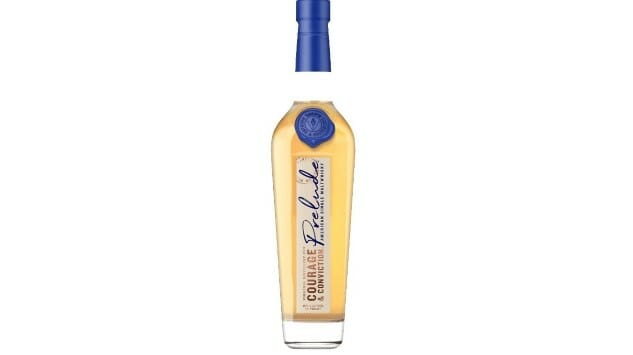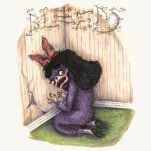Virginia Distillery Co. Prelude: Courage & Conviction Malt Whisky
Photos via Virginia Distillery Co.
As the microdistillery renaissance has come into full bloom over the course of the last decade, following in the footsteps of the craft beer movement, American single malt has been patiently biding its time.
If you’re still just seeing the words “American single malt” for the first time, don’t fret. The world of malt whisky terminology is a fraught and confusing one, and there’s still a lot of education to be done about whisky/whiskey substyles even among the average, committed American brown liquor consumer. They are, for the sake of brevity, 100% malt whiskies, in the style of the more well-known Scottish malt whiskies (which we just call “scotch”), except made in the U.S.A. Or in other words, “American single malts” are the U.S. microdistillery scene’s answer to scotch, except for the fact that they’re usually not directly comparable in terms of flavor profile, for a few key reasons.
First of all, there’s the fact that Scottish malt whiskies by and large take a long time to make. Because the scotch whisky industry is fueled by the re-use of once-used American whiskey barrels, which contribute color and flavor much slower than the newly charred barrels used to create spirits such as American bourbon, the average single malt whisky in Scotland takes much longer to age than the average malt whiskies made in the U.S. In Scotland, in fact, many distilleries youngest single malts are 10 or 12 years old, which is viewed by those companies as the necessary amount of time to create a finished product with barrels have have less intense but arguably more nuanced flavors to impart.
In the American scene, on the other hand, malt whiskies are far more likely to come into contact with newly charred oak, which both vastly accelerates the process and introduces its own distinct flavor notes, blurring the lines between styles such as “single malt whisky” and bourbon. What you end up with in most American single malts, then, are whiskies that reflect some of the processes and expected flavors of American whiskey styles such as bourbon, while retaining the character of distilled malted barley as well. As a result, they’re a logical stepping stone between, say, bourbon and scotch.
Into this growing field steps Lovingston, VA’s Virginia Distillery Co., which was launched with the sole intent of being the country’s largest independent producer of American single malt whisky. It will inherit that title soon, with the arrival of its flagship single malt whisky, Courage & Conviction, which is scheduled to hit store shelves in April of 2020. Before that arrival, however, and in a well-coordinated effort to stir up some buzz, the company has released a series of bottles dubbed Prelude: Courage & Conviction, to preview its unique new American single malt to the world. I happened to snag one of those bottles for myself, and can say that although many microdistilleries have invested their time and energy into American single malt to date, none of them have done it quite like this.
Courage & Conviction is a blend of 100% malt whiskies aged three years in a variety of casks, relying upon various cask finishes and wood influences to compensate for the lack of the more traditional, larger age statement. The following casks are used:
— Bourbon casks: As in malt whisky aged in Scotland, these are used American bourbon barrels, which impart gentle impressions of the spirit that was formerly inside, while allowing for slow maturation. Many of the world’s iconic scotches are aged solely in used American bourbon casks, but few of those single-malts are released at only three years of age. That suggests the influence of other casks coming into play—casks that will contribute more character, more quickly.
-

-

-

-

-

-

-

-

-

-

-

-

-

-

-

-

-

-

-

-

-

-

-

-

-

-

-

-

-

-

-

-

-

-

-

-

-

-

-

-








































